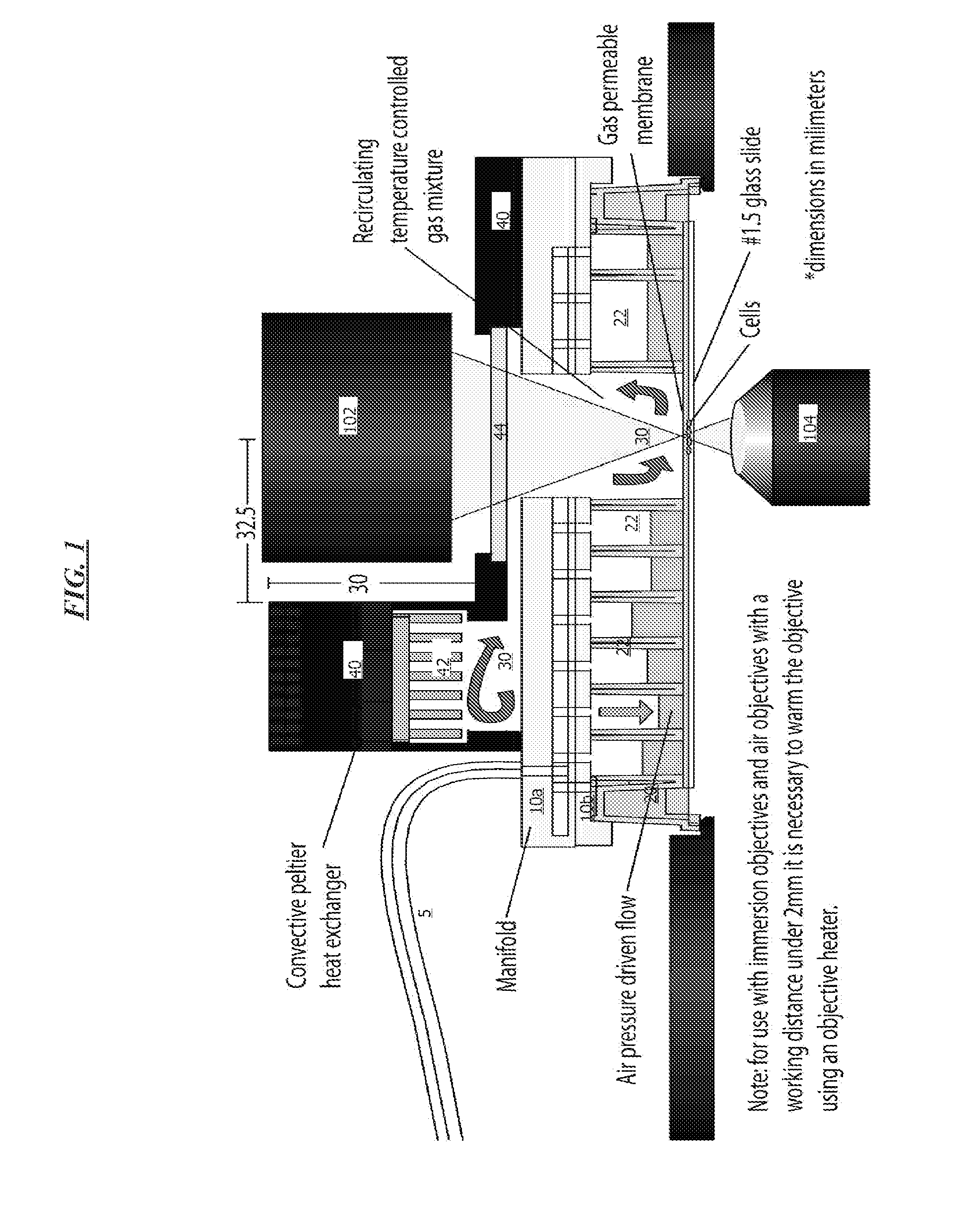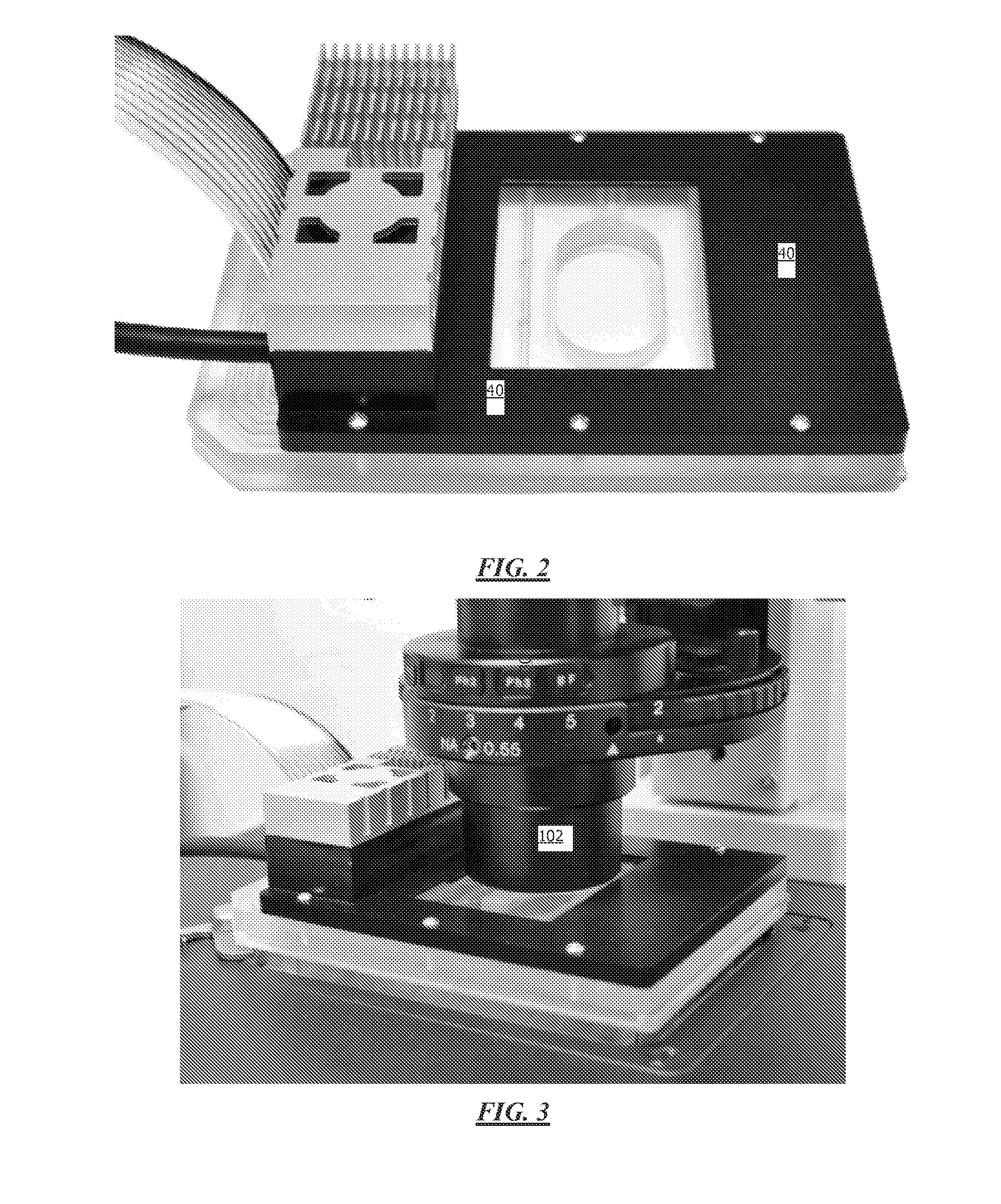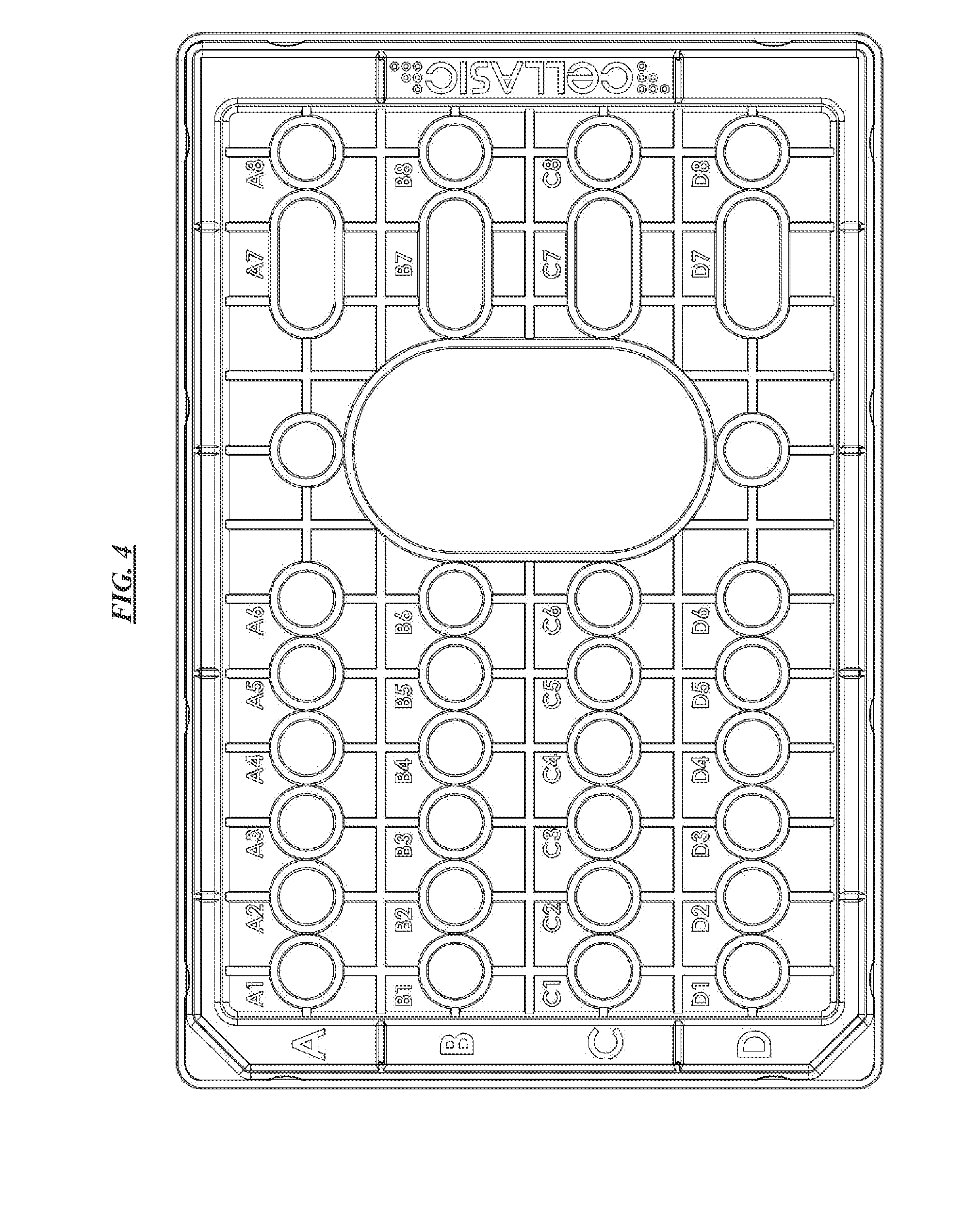Micro-Incubation Systems For Microfluidic Cell Culture And Methods
a micro-incubation system and micro-fluidic cell technology, applied in the field of micro-incubation systems for microfluidic cell culture and methods, can solve the problems of high consumption of energy and gas, high construction cost, and obstruction of access to the microscop
- Summary
- Abstract
- Description
- Claims
- Application Information
AI Technical Summary
Benefits of technology
Problems solved by technology
Method used
Image
Examples
example cell
Culture
[0093]Cells were cultured using the micro-incubation system to control temperature and gas atmosphere. In one example, human cancer cells (HT-1080, MCF-7, MDA-MB-231) were cultured at 37 C and 5% CO2 to monitor cell division over 24 hours. Additional cell types, including yeast, bacteria, primary cells, neurons, etc. have been successfully cultured using the microincubation system. As an example, FIG. 13 shows NIH-3T3 mouse fibroblasts cultured using the microincubator system according to specific embodiments of the invention at t=0 (left) and after 15 hours (right) showing cell growth and viability. When no temperature or CO2 was controlled, the cells rapidly died within 2 hours.
[0094]Integrated systems for the collection and analysis of cellular and other data as well as for the compilation, storage and access of the databases of the invention, typically include a digital computer with software including an instruction set for sequence searching and / or ana...
PUM
| Property | Measurement | Unit |
|---|---|---|
| incubation volume | aaaaa | aaaaa |
| volume | aaaaa | aaaaa |
| depth | aaaaa | aaaaa |
Abstract
Description
Claims
Application Information
 Login to View More
Login to View More - R&D
- Intellectual Property
- Life Sciences
- Materials
- Tech Scout
- Unparalleled Data Quality
- Higher Quality Content
- 60% Fewer Hallucinations
Browse by: Latest US Patents, China's latest patents, Technical Efficacy Thesaurus, Application Domain, Technology Topic, Popular Technical Reports.
© 2025 PatSnap. All rights reserved.Legal|Privacy policy|Modern Slavery Act Transparency Statement|Sitemap|About US| Contact US: help@patsnap.com



